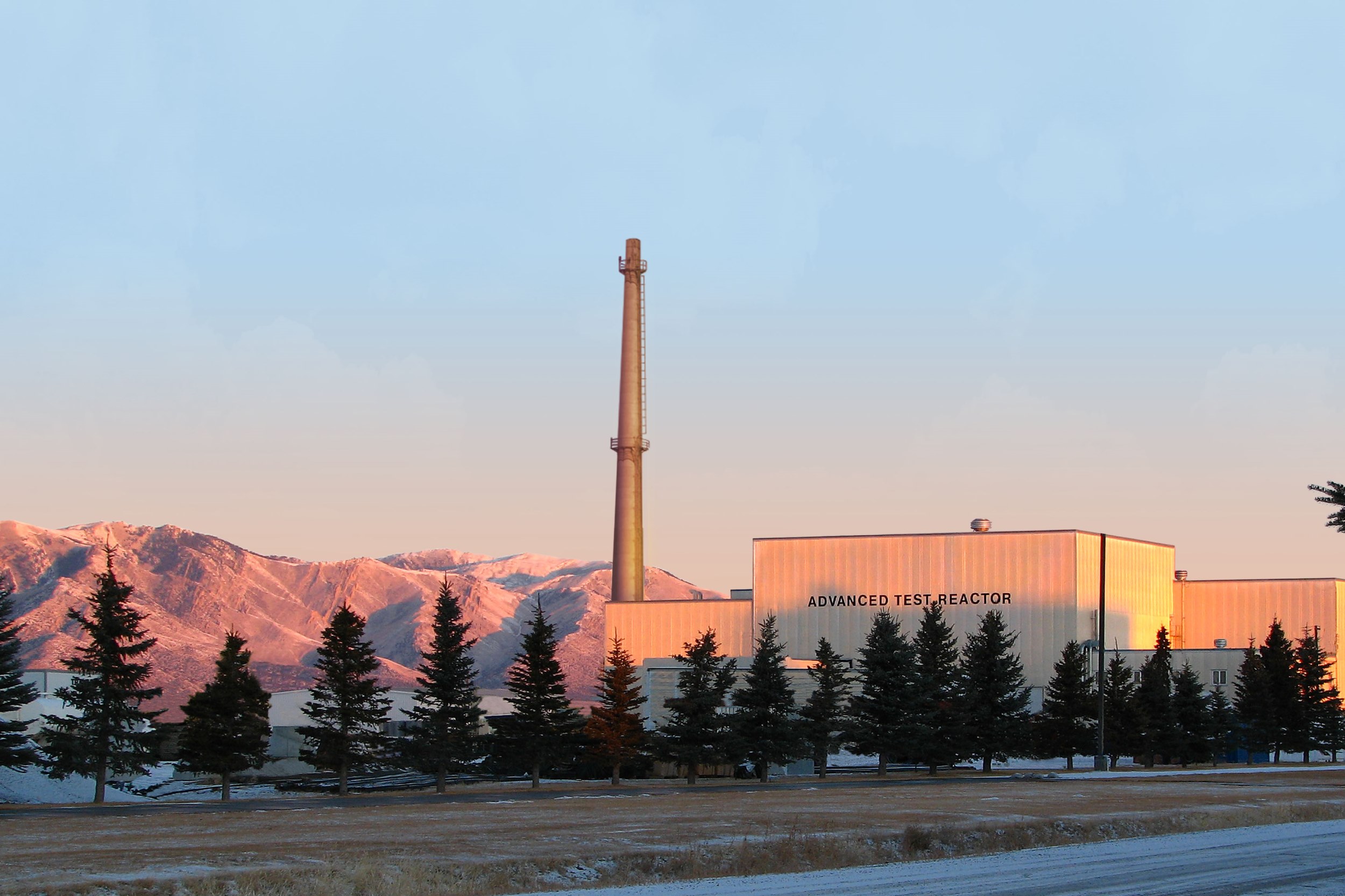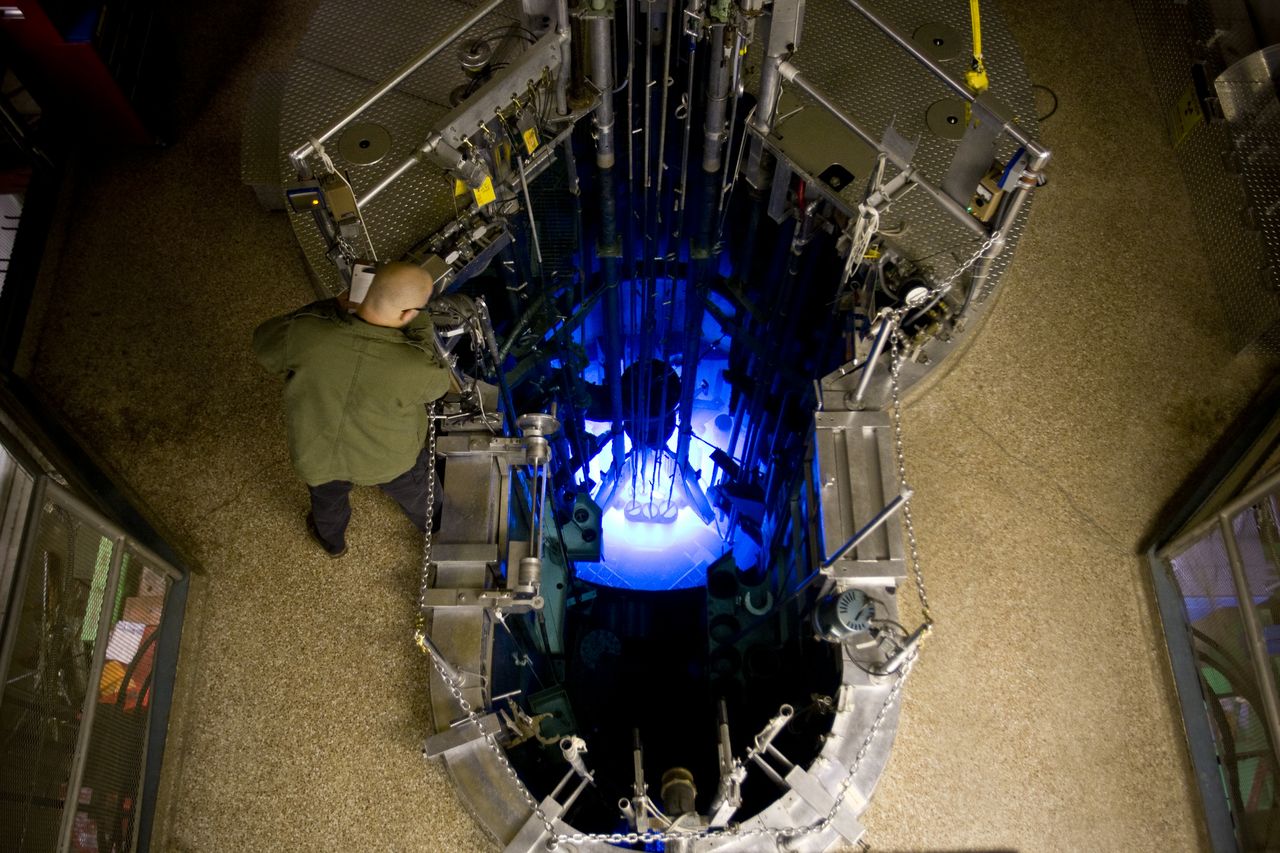The ORNL High Flux Isotope Reactor (HFIR)
In operation since 1965, ORNL's High Flux Isotope Reactor is one of the most versatile irradiation facilities in the world. It was constructed to meet the production needs of transuranic isotopes like californium and curium, but it's mission also includes materials irradiation, neutron activation, and neutron scattering. Operating at 85 MW, HFIR is one of the highest flux reactor-based sources of neutrons for condensed matter physics research in the United States, and it provides one of the highest steady-state neutron fluxes (up to 2.5 × 1015 neutrons/cm2/sec) of any research reactor in the world. The thermal and cold neutrons produced by HFIR are used to study physics, chemistry, materials science, engineering, and biology. The intense neutron flux, constant power density, and constant length fuel cycles are used by more than 500 researchers each year for neutron scattering research into the fundamental properties of condensed matter and other in-core experiments.
The reactor is beryllium-reflected, light-water-cooled and moderated, and uses highly enriched uranium-235 as fuel. Operated cycles at HFIR last approximately 25 days, and seven cycles are typically conducted each year. Key isotopes routinely produced at HFIR include californium-252, nickel-63, selenium-75, actinium-227, and strontium-89.
HFIR's in-core irradiation capabilities allow experiments and isotope production capsules to be placed in a wide variety of positions. With HFIR's mission expansion, many new experiment facilities have been built, including four horizontal beam tubes, originating in the beryllium reflector; the hydraulic tube irradiation facility and two pneumatic tube facilities that enable insertion and removal of samples during operation; 30 target positions in the flux trap; six peripheral target positions on the outer edge of the flux trap; numerous vertical irradiation facilities ranging in size spaced throughout the reflector; and two slant access facilities, or "engineering facilities," around the edge of the reflector.
More information can be found at the HFIR Homepage.
The INL Advanced Test Reactor (ATR)
Designed and constructed in the 1960s, the INL Advanced Test Reactor, or ATR, is the only U.S. research reactor that offers large-volume, high-flux neutron irradiation in a prototype environment, making it a prime candidate for studying the effects of intense neutron and gamma radiation on reactor materials and fuels. The 250 MW reactor operates at low pressure and low temperature with a high neutron flux up to ~4.4 × 1014 neutrons/cm2/sec. The reactor is cooled by light water with a beryllium reflector for high neutron efficiency.

The ATR can accommodate an extensive range of irradiation testing. It is equipped with a unique serpentine core that allows the reactor’s corner lobes to be operated at different power levels, making it possible to conduct multiple simultaneous experiments under different testing conditions. Other key characteristics include large test volumes, up to 48 in. long and 5 in. in diameter; 77 testing positions; fast/thermal flux ratios ranging from 0.1 to 1.0; constant axial power profile; power tilt capability for experiments in same operating cycle; frequent experiment changes; and seismic shutdown system that can automatically shut down the plant if certain levels of seismic activity are detected.
The ATR produces cobalt-60, the medical radioisotope used in Gamma Knife® treatments of brain tumors, and is expanding its production to other medical and industrial isotopes.
More information can be found at the ATR Fact Sheet.
The University of Missouri Research Reactor Center (MURR®)
For more than 50 years, the University of Missouri Research Reactor (MURR®) has promoted ground-breaking research and life-saving radiopharmaceuticals, providing benefits to people around the world. MURR is the highest-power university research center in the U.S., operating at 10 megawatts, 6.5 days a week, 52 weeks a year. This routine reliability makes the MURR facility an essential resource for researchers, scientists, engineers, and students across the country. In a typical year, MURR supplies more than 35 different isotopes and send out more than 2,000 shipments.

MURR is equipped with more than 25 different irradiation positions spanning numerous neutron fluxes and geometries. The facility houses state-of-the-art hot cells, shielded glove boxes, clean rooms, and laboratories needed to reliably meet the demand for radiopharmaceutical products and industrial radioisotopes. Additionally, through a public/private partnership, a 16 MeV cyclotron enables the staff to supply PET imaging agents for translational medicine and plant biochemistry studies.
More information can be found at the MURR homepage.




